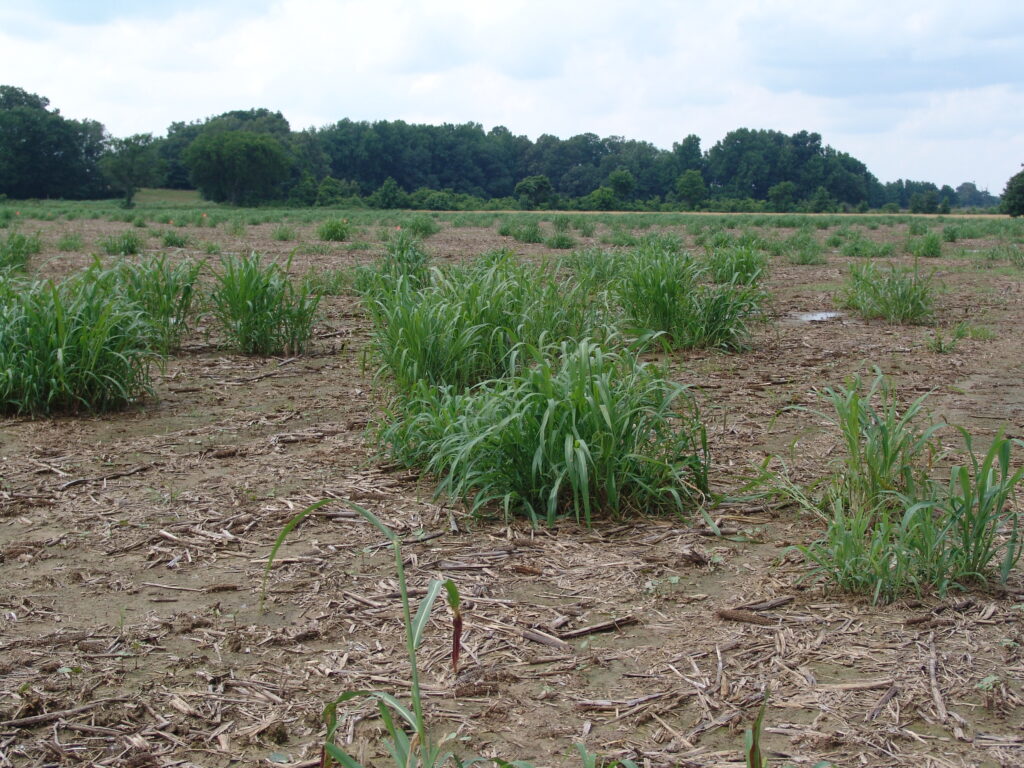
Large patches of Johnsongrass that have gotten through glyphosate burndown are now very prevalent in many fields. This is particularly noticeable in several southeastern counties of West Tennessee where some of the Johnsongrass has shaken off burndown and now is almost waist high in some cases. The main threat with Johnsongrass is in corn where there are few POST applied options.
The questions in corn are from fields where Johnsongrass has escaped burndown and now are skeptical how well glyphosate will work postemergence. In short, I would not expect glyphosate will be anymore successful on Johnsongrass the second time around than it was at burndown. Some of our corn is nearing V2 corn growth stage so time is becoming an issue in these fields. The only two good options are Steadfast Q, which has a cutoff of V6 corn, and Liberty (in LL corn only), which has a cutoff of V7 corn. The best option is a two-shot approach with an application of Steadfast Q followed by Liberty (in LL corn only). Unfortunately, we do not have the time to wait on these earlier planted corn fields to come back with Liberty so I would go with a single application of Steadfast Q.
Please consider that the Johnsongrass is recovering from those earlier herbicide applications and as such will be less susceptible to either Steadfast Q or Liberty applied now. At this point the best we can probably do is suppress the weed to some extent. I definitely would be surprised if these late applications provided complete control.
A good option to consider is sometime in September after the Johnsongrass has recovered some after corn harvest is to apply a high rate of clethodim then. That time of year herbicides are more readily translocated to the root as Johnsongrass prepares to overwinter and therefore, an application in the fall will have the best chance to control well-established Johnsongrass.
In soybean and cotton in-crop, the main “go to” is either Assure II or clethodim. With Assure II if applying one application use the high rate of 10 ozs. For intense infestations the best approach is to apply 5 ozs of Assure II and then apply another 5 ozs when regrowth reaches 6” tall. With clethodim use a high rate such as 16 ozs of a 2 lb product. Remember with clethodim there are 1, 2 and 3 lb products. A sequential application of clethodim will often be needed for well-established Johnsongrass infestations.
Finally, these intense infestations of Johnsongrass did not develop overnight but rather over a period of several years. As such, it will take persistence over several years to knock back some of these well-established Johnsongrass infestations.

